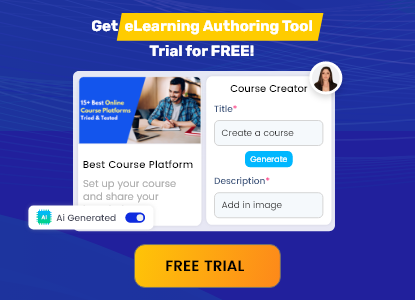Introduction
In the fast-evolving world of eLearning, HTML5 eLearning authoring tools have emerged as game-changers, offering flexibility, interactivity, and cross-platform compatibility. Traditional Flash-based eLearning content is now obsolete, making HTML5 the go-to standard for creating engaging, responsive, and accessible learning experiences.
With businesses, educators, and training professionals seeking innovative ways to deliver knowledge, HTML5 eLearning authoring tools play a crucial role in shaping the future of digital education. These tools not only enhance learning engagement but also support multimedia integration, seamless navigation, and mobile-friendly courses.
But what exactly makes HTML5 authoring tools so important? How do they improve eLearning experiences? Let’s explore in detail.
Why Are HTML5 eLearning Authoring Tools Important?
1. Cross-Platform Compatibility
With the rise of mobile learning, eLearning content must be accessible on multiple devices, including desktops, tablets, and smartphones. HTML5 authoring tools ensure content adapts to different screen sizes and operating systems, providing a consistent learning experience across platforms. This eliminates barriers to access and ensures a seamless transition from one device to another. Additionally, organizations can reach a broader audience by making their courses available across all platforms without additional development costs.
2. Enhanced Multimedia Integration
HTML5 supports high-quality video, audio, animations, and graphics without requiring external plugins. This enables course creators to develop rich, interactive experiences that keep learners engaged. With the ability to incorporate dynamic content such as interactive infographics and explainer videos, learners experience a more immersive and visually appealing educational environment. Furthermore, multimedia elements help cater to different learning styles, making content more accessible to auditory and visual learners.
3. Improved Accessibility and Compliance
Many organizations need to comply with accessibility standards like WCAG (Web Content Accessibility Guidelines) and Section 508. HTML5 eLearning authoring tools help create content that is accessible to all learners, including those with disabilities. Features like text-to-speech functionality, keyboard navigation, and screen reader compatibility make learning inclusive. Ensuring accessibility not only meets regulatory requirements but also demonstrates a commitment to diversity and equal learning opportunities.
4. Faster Load Times and Better Performance
Unlike Flash-based content, HTML5 eLearning courses load quickly and run smoothly. This enhances user experience and reduces dropout rates due to slow-loading materials. Faster load times prevent frustration among learners and keep them engaged for longer periods. Additionally, optimized performance means reduced server strain and bandwidth consumption, making HTML5 an efficient choice for organizations with large-scale training programs.
5. Interactivity and Engagement
Modern learners prefer interactive courses over static text-based materials. HTML5 authoring tools support gamification, simulations, quizzes, and drag-and-drop activities that enhance engagement and retention. These interactive elements make learning more enjoyable and improve knowledge retention. Features such as scenario-based learning and real-time feedback also help reinforce concepts, ensuring learners can apply their knowledge effectively in real-world situations.
6. SCORM and xAPI Compliance
Most HTML5 eLearning authoring tools support SCORM (Sharable Content Object Reference Model) and xAPI (Experience API), ensuring seamless LMS integration and learner progress tracking. This allows organizations to monitor learner performance, track engagement metrics, and personalize learning experiences based on real-time data. SCORM and xAPI compliance also ensure that content remains compatible with a variety of Learning Management Systems (LMS), making it easier to manage and distribute courses.
7. Cost-Effectiveness and Easy Updates
Since HTML5 content can be easily edited and updated, organizations save costs on maintaining and reworking courses. Updates are simple, ensuring content stays relevant and up to date. Instead of creating new courses from scratch, businesses can modify existing content to reflect the latest industry standards and best practices. This flexibility reduces downtime and ensures that training materials remain valuable and accurate over time.
Conclusion
As eLearning continues to grow, leveraging HTML5 eLearning authoring tools is crucial for delivering impactful and engaging learning experiences. Whether you’re an educator, corporate trainer, or instructional designer, investing in the right authoring tool can significantly enhance your content quality and learner engagement.
Ready to transform your eLearning strategy? Explore the best eLearning authoring tools today and start creating interactive, high-impact courses!
About the author
Pradnya Maske
administrator
Pradnya Maske is a Product Marketing Manager with over 10+ years of experience serving in the eLearning industry. She is based in Florida and is a senior expert associated with Paradiso eLearning. She is passionate about eLearning and, with her expertise, provides valued marketing services in virtual training. Her background includes analyzing, designing, and developing marketing programs to grow and expand online learning programs. She is an expert in building product marketing strategies and working on market trends, competition and pricing. Her true passion lies in solving learning problems and making learning accessible to all.























